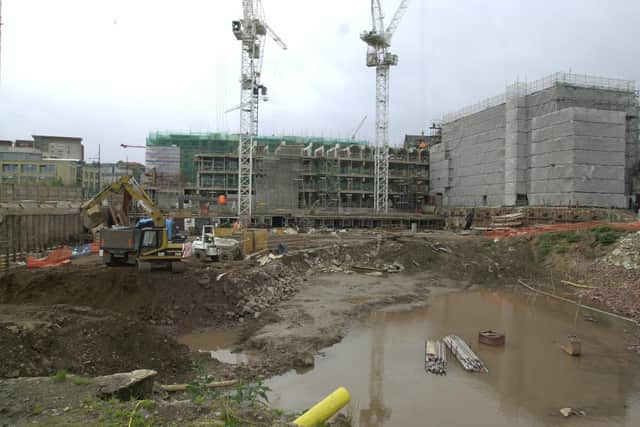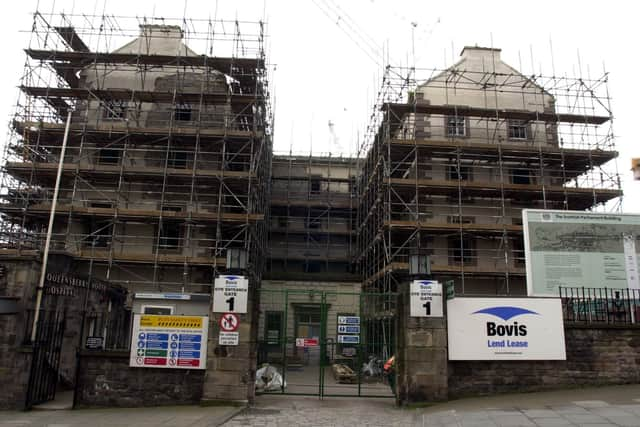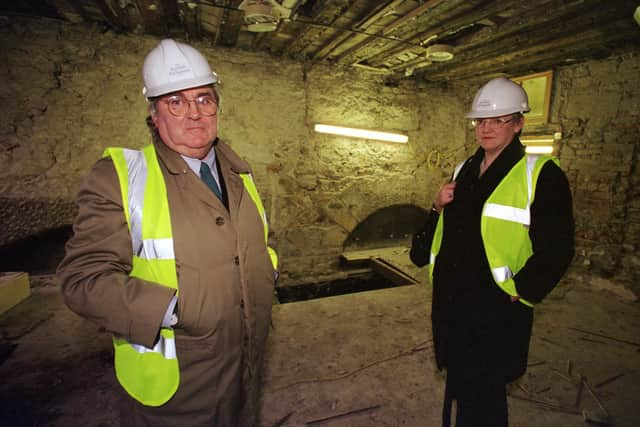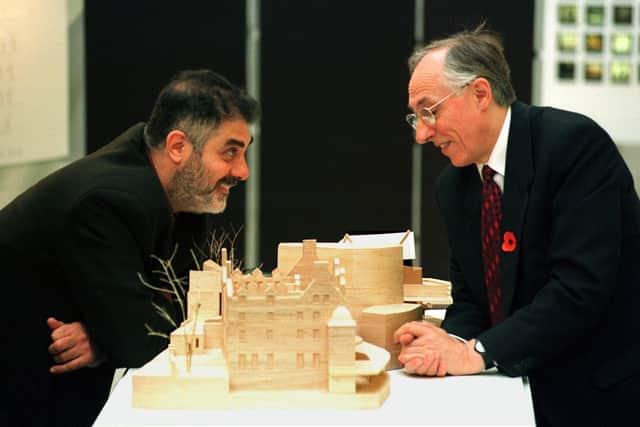Scottish Parliament: Remembering Edinburgh's Holyrood building saga which came with controversies and costs
and live on Freeview channel 276
The creation of the Scottish Parliament in 1999 was a hugely historic event, allowing Scotland to make its own decisions on most of the key issues affecting people’s day-to-day lives.
Nearly 300 years after the old Scottish parliament was "adjourned", the nation was getting a new, modern, democratic legislature. But there was a problem – the parliament needed somewhere to meet and the old Royal High School at Calton Hill, earmarked for the purpose during an earlier attempt to set up a devolved "Assembly", was deemed no longer suitable.
Advertisement
Hide AdAdvertisement
Hide AdBefore it had even started, the new parliament was plunged into major controversy over its building, where it should be, who should design it, how much it would cost and when it would be ready – and the Evening News reported on the saga every step of the way.


After Scottish Secretary and soon-to-be First Minster Donald Dewar had ruled out the High School, there was a widespread public debate about the rival merits of an alternative Calton Hill scheme, which would mean creating a debating chamber inside St Andrew’s House, versus a purpose-built parliament on the waterfront in Leith.
A third site was thrown into the mix – the former Morrison Street good yard at Haymarket. Polls suggested Calton Hill was the public's favourite. But in the end Donald Dewar chose a last-minute fourth option – the site of brewers Scottish & Newcastle's headquarters in Holyrood Road, just across the road from the Palace of Holyroodhouse.
Next was choosing the architect. A competition was launched – not for a design, but for a designer. A shortlist of five was chosen in June 1998 and the Evening News published the rival visions, inviting readers to take part in an unofficial vote on which they preferred. Catalan architect Enric Miralles, the eventual winner, came last in the News poll with no votes at all.
Advertisement
Hide AdAdvertisement
Hide AdThe first public sign of trouble came in January 1999 when it emerged project director Bill Armstrong had resigned, claiming the project was already behind schedule and over budget, though the Scottish Office insisted the building would be ready by the second half of 2001 for the stated cost of £50 million plus VAT. Six months later the Scottish Government, who had taken over the project, admitted the cost had risen to £110m. Many further price hikes followed over the next few years, and the eventual final cost was £414m.


In the meantime, MSPs began to argue the parliament could just stay in its temporary home at the Church of Scotland’s General Assembly Hall instead of spending so much on a new building. And when Edinburgh-based MSPs Donald Gorrie and Margo MacDonald proposed pausing the Holyrood project, their motion was defeated by just three votes.
There was a row about the lay-out of the debating chamber, which had been envisaged as a semi-circle in contrast to Westminster’s confrontational design. In July 1999 the Evening News wrote: “It started as a horseshoe, briefly became a coffin and is currently a banana – but who knows what shape the debating chamber of Scotland's new parliament will finally take?"
The answer, two months later, was an “ellipse” or “semi-oval”. Presiding officer Sir David Steel declared himself satisfied and critic Donald Gorrie told the News: "I understood there was a limit to how bendy the chamber could be because of the space available, but the bendier the better.”
Advertisement
Hide AdAdvertisement
Hide AdMr Gorrie was soon highlighting other concerns with the building, claiming the six-storey MSP block looked like an "el cheapo hotel". And attention turned to Queensberry House, the 17th century mansion which was being incorporated into the parliament. Restoration costs were proving higher than expected and the Evening News revealed Miralles had wanted to knock it down.


Scottish Government chief architect John Gibbons said Miralles had “never seen Queensberry House as a particularly fine building” and had “a simple solution” to the problem. But conservationists were horrified, saying demolition was “beyond contemplation” and Sir David Steel issued an assurance the building would stay.
Nevertheless, a couple of months later, Miralles told the Evening News that critics of the rising costs should look to Queensberry House as the real problem, saying it could “blow down in the wind” and was “worse than a ruin”. He also hit out at an independent inquiry ordered by the parliament into the project as “a waste of time”.
In April 2000, there was shock when it emerged Miralles was seriously ill. The Evening News had revealed he was to take a back seat on the project, but the first news of his illness came from presiding officer Sir David Steel as MSPs voted once more on the project, deciding by nine votes to carry on. Sir David gave no detail of Miralles’ illness, but friends told the Evening News he had undergone “life-saving brain surgery”.
Advertisement
Hide AdAdvertisement
Hide AdHowever, Miralles died on July 3 from a brain tumour. One close friend told the News that shortly before his death Miralles had been “very angry” with the way he had been treated by politicians.


Three months later, Donald Dewar died too, meaning the two biggest figures associated with the project were no longer there. Cost increases and delays continued until the building finally opened in October 2004. By then, new First Minister Jack McConnell had agreed to Margo MacDonald’s call for a public inquiry headed by former Lord Advocate Lord Fraser of Carmyllie into what went wrong with the project.
At the inquiry, Brian Stewart, chief executive of RMJM – the Edinburgh architects working with Miralles – said he would never build another parliament after the six-year "nightmare" of the Holyrood project. He said the Barcelona end of the partnership did not always appreciate the day-to-day pressure the project was under. "They were not reading the Evening News every day," he said. But he added: "We sent it to them."
Lord Fraser put most blame on the civil service but concluded there was “no single villain of the piece”. He said: “So far as the Holyrood project was concerned, if it could go wrong, it did go wrong.” But the inquiry was not the end of the story.
Advertisement
Hide AdAdvertisement
Hide AdJust as the row over the building appeared to be fading, one of the massive beams in the roof of the debating chamber swung loose, forcing MSPs to evacuate and a full safety check of the ceiling was carried out. And there was more controversial expenditure, including £1.5m on concrete bollards and £6.5 million for a security extension at the public entrance.
There had been criticism that the unrelenting coverage of the saga was undermining the newly-formed parliament and damaging devolution, but reporting on the delays, the rising costs and the concerns about the building was an important part of Scotland's new democracy. And the inquiry showed the rows and tensions behind the scenes were even worse than reported.